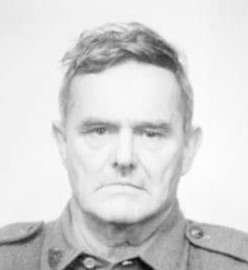James Henry (Harry) Plumb (543)
James Henry (Harry) Plumb (543)
James Henry Plumb was born in the Maryborough district on 26 August 1889 to parents William Henry and Ellen (née Walsh). He arrived in the district as a young man, was among the early banana growers in the Tully River area, and was entered into the Shire Rate Book on 5 September 1912, for Portion 189, Parish of Rockingham, which lay along Banyan Creek. Later rates records show he owned Portion 164, Rockingham, along what is now East Feluga Road. He was listed in the Post Office Directory for Banyan in 1913-14 as “Plumb, Harry – farmer”.
He went to Innisfail to enlist for the war effort on 12 April 1915 (service number 543) and was appointed to the 26th Battalion (Headquarters Batman). After training at Enoggera he embarked on HMAT Aeneas at the end of June with the 26th Infantry Battalion. He left Alexandria to join the Mediterranean Expeditionary Force serving on the Gallipoli Peninsula on 4 September 1915, arriving with the 26th on 12 September. The Battalion played a defensive role, being at times responsible for the defence of Courtney’s and Steele’s Posts and Russell’s Top.
After the evacuation, the unit returned to Egypt. Plumb disembarked from Mudros at Alexandria on 9 January 1916. While serving in Egypt, in January he was hospitalized with bronchitis at Cairo and his next of kin were advised. A period of convalescence at Helouan followed but he finally returned to his unit in March at Moascar. His unit embarked then from Alexandria to join the British Expeditionary Force in France, arriving at Marseilles, 21 March 1916 and he was back in hospital immediately for a short time.
The 26th Battalion served at the Somme and in Flanders. During his service here, Plumb continued to suffer from bronchitis and was hospitalized several times. In March 1917 he was diagnosed with pneumonia and was treated in Rouen and in hospital in Belgium. He was wounded in action on 3 October 1918 (shrapnel wound), receiving a severe leg injury, and his next of kin were advised. This date was the Battalion’s last action of the war, the capture of Lormisset which was part of the operation to breach the Beaurevoir Line.
Plumb was still undergoing treatment in Harefield Hospital in England in December but his next of kin were notified that he was “progressing favourably” and then that he was “convalescent”. Before returning to Australia he married an English bride, Eleanor Kate Elford of Southall, Middlesex. They were married at Weymouth, the church near the camp where Plumb was posted at the time, on 5 March 1919. Plumb was invalided and returned to Australia in April 1919 on the Marathon with his wife. He was discharged on 10 August 1919.
Back in the Tully district, Plumb was among the new cane growers of 1924 who had cleared their property of scrub with axes. He was also one of those who sent their first cane to Giru as the Tully Sugar Mill had not yet commenced production. He did not retain his block of 679 acres (275 hectares) near the mouth of the Murray River past the Bluff Landing after 1926.
As the dangers of WW2 increased James Henry Plumb volunteered for the VDC on 7 January 1942, being then resident at Tinana, Queensland. He returned to his home town of Maryborough to enlist. He served as a Private in the Garrison Battalion until his discharge on 3 October 1943.
Plumb suffered from his war disabilities but he obtained a large block of Cutten land at Bingil Bay and lived there until his death. Harry Plumb died on 22 September 1957 and was buried in the Tully cemetery.
Researched and written by The Cardwell Historical Society Cardwell Queensland. Submitted by Lyn Turner
Submitted 24 December 2020
by Lynette Turner









